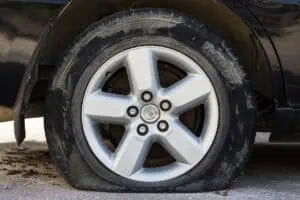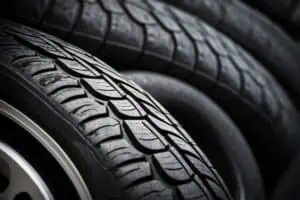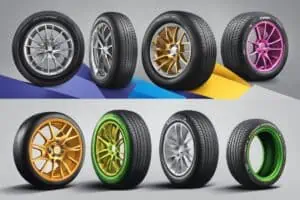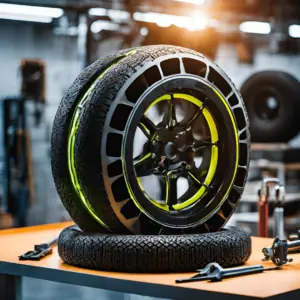Ever wondered why some vehicles seem to glide effortlessly down the road while others feel like they’re dragging an
invisible anchor? The secret lies in a concept known as rolling resistance. In this deep dive, we’ll explore how this often
overlooked factor plays a pivotal role in vehicle performance, fuel efficiency, and even our planet’s health.
What is Rolling Resistance?
Picture this: you’re pushing a heavy box across a carpet. The force you need to keep it moving at a constant speed?
That’s essentially rolling resistance in action. For vehicles, it’s the energy required to keep the wheels turning at a
steady pace on a flat surface.
Why Should You Care?
Here’s the kicker: rolling resistance isn’t just some abstract concept for engineers to fuss over. It directly impacts your
wallet, your safety, and yes, even the air you breathe. Let’s break it down:
- Fuel Efficiency: Lower rolling resistance means your vehicle needs less energy to keep moving. For gas-guzzlers,
that translates to fewer trips to the pump. For EVs, it’s all about squeezing more miles out of each charge. - Performance: Ever felt your car struggling to accelerate? High rolling resistance could be the culprit, acting like
an invisible brake. - Safety: It’s not all about speed and efficiency. The right balance of rolling resistance is crucial for maintaining
grip, especially in wet conditions. - Environmental Impact: Less energy used means fewer emissions. It’s that simple.
The Science Behind Roll Resistance
So, what factors influence rolling resistance? It’s not just about the tires, although they play a starring role:
- Tire Design: The rubber compound, tread pattern, and even the tire’s shape all come into play.
- Vehicle Weight: Heavier vehicles generally have higher rolling resistance.
- Road Conditions: Smooth highways versus rough country roads? Big difference.
- Speed: Faster isn’t always better when it comes to rolling resistance.
- Temperature: Tire pressure changes with temperature, affecting rolling resistance.
Measuring the Unmeasurable
How do we quantify something we can’t see? Engineers have developed sophisticated methods:
- Coast-Down Testing: Vehicles are accelerated to a specific speed, then allowed to coast. The rate of deceleration
gives insights into rolling resistance. - Drum Tests: Tires are run on large drums in controlled lab conditions, measuring the force needed to keep them
rolling. - On-Road Testing: High-tech sensors and GPS systems allow for real-world measurements.
Real-World Impact: Case Studies
Let’s put some rubber on the road with real-world examples:
Case Study 1: The Long-Haul Trucker
A major trucking company switched to low rolling resistance tires on their fleet. The result? A 3% reduction in fuel
consumption. It might not sound like much, but when you’re covering millions of miles, those savings add up fast.
Case Study 2: The Electric Revolution
Tesla’s Model 3 uses tires specifically designed to minimize rolling resistance. This contributes to its impressive range,
allowing drivers to go further on a single charge.
Case Study 3: Tour de France
Even in the world of professional cycling, rolling resistance is a game-changer. Teams spend millions on developing
tires that strike the perfect balance between grip and low resistance, often gaining crucial seconds in time trials.
The Cutting Edge: Recent Advancements
The quest for lower rolling resistance is driving innovation across the automotive industry:
- Nanomaterials: Tire manufacturers are experimenting with materials like nanocarbon and nanosilica to improve
performance without sacrificing durability. - Airless Tires: Companies like Michelin are developing airless tire designs that could revolutionize rolling
resistance. - Smart Tires: Embedded sensors can now provide real-time data on tire pressure and temperature, allowing for
optimal performance. - Regenerative Braking: While not directly related to rolling resistance, this technology in EVs and hybrids helps
recapture energy that would otherwise be lost.
The Road Ahead
As we push towards a more sustainable future, rolling resistance will play an increasingly crucial role. Here’s what to watch for:
Stricter Regulations: Expect to see more government mandates on tire efficiency.
Consumer Awareness: As fuel prices fluctuate and environmental concerns grow, consumers will demand more efficient options.
Integration with Autonomous Vehicles: Self-driving cars will need to optimize every aspect of their performance, including rolling resistance.
Rolling Resistance Equals A Cleaner Future
Rolling resistance isn’t just about making cars go faster or farther. It’s about creating a more efficient, safer, and
sustainable transportation system. As we’ve seen, even small improvements can have massive impacts when scaled up
across millions of vehicles.
So, the next time you’re cruising down the highway or watching your EV’s range tick down, spare a thought for the
complex interplay of forces at work beneath your wheels. Rolling resistance might be invisible, but its impact is
anything but.
Remember, whether you’re a daily commuter, a long-haul trucker, or a weekend cyclist, understanding rolling
resistance can help you make smarter choices about your vehicles and tires. It’s not just about saving money – it’s about
driving towards a cleaner, more efficient future for all of us.





























